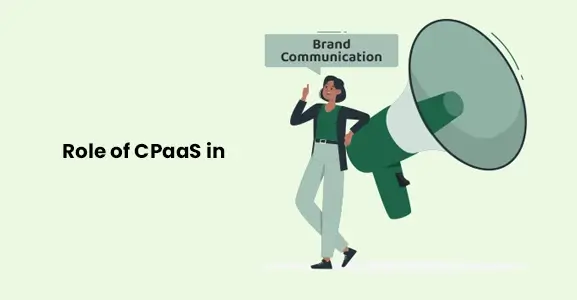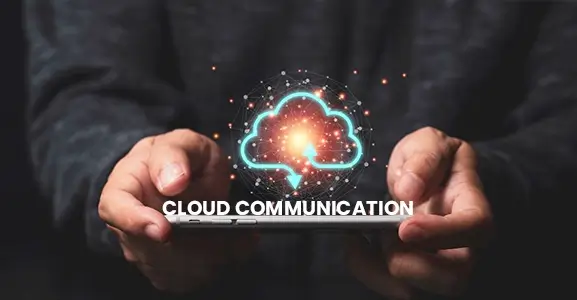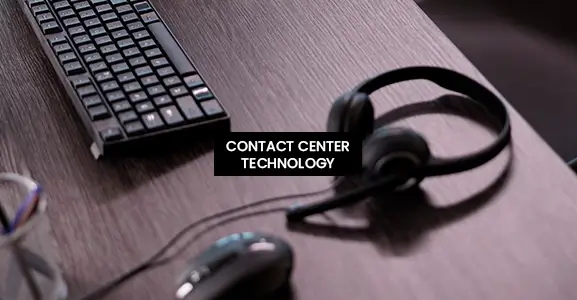Direct Inward Dialing (DID) offers a remedy to the challenges posed by automated call menus, fostering more direct connections by efficiently directing calls to specific phones within your company’s network.
This article delves into the intricacies of Direct Inward Dialing, exploring its definition, functionality, implementation, and the business advantages it brings.
What Is Direct Inward Dialing (DID)?
Direct Inward Dialing (DID) is a telephone system feature designed to expedite the connection of incoming calls to specific users, extensions, or voicemail boxes, offering a more streamlined approach compared to navigating through automated routing menus.
To enable Direct Inward Dialing, businesses lease phone numbers from service providers and subsequently allocate these DID numbers to specific users, queues, or ring groups.
Both cloud-based Private Branch Exchange (PBX) systems and traditional landline PBX providers offer Direct Inward Dialing, with the setup process differing based on whether your phone system operates on Voice over Internet Protocol (VoIP) or Public Switched Telephone Network (PSTN) technology.
What Is A DID Number?
Direct Inward Dialing full form of DID Number, is a business phone number configured to directly connect to a designated phone or user within the company’s telephone network, eliminating the need to navigate through IVR menus or self-service routing systems.
If your organization employs a traditional landline PBX phone system, your service provider can allocate local phone numbers based on your office location.
Alternatively, when using a cloud-based or hosted PBX system offered by a VoIP or UCaaS provider, you have the flexibility to acquire local, toll-free, or custom vanity numbers from various geographical locations worldwide and subsequently assign them to your team members.
How Does A Direct Inward Dialing System Work?
Direct Inward Dialing (DID) is a telephony feature that streamlines the process of routing incoming calls directly to specific extensions, users, or voicemail boxes within an organization without the need for manual intervention or navigating complex IVR menus.
Here’s how DID works:
- Phone Number Assignment: A business or organization acquires a block of phone numbers from a telecommunications service provider. These numbers are known as DID numbers.
- Number Mapping: Each DID number is mapped or associated with a particular extension or user within the organization’s phone system. This mapping is configured in the PBX (Private Branch Exchange) or phone system settings.
- Call Reception: When an external caller dials one of the DID numbers, the call is directed to the organization’s PBX or phone system.
- Automatic Routing: The PBX or phone system uses the mapping information to automatically route the call to the corresponding extension, user, or voicemail box associated with the dialed DID number. This routing is done without the need for the caller to interact with an IVR system or receptionist.
- Call Connection: The call is seamlessly connected to the intended recipient, who can then answer the call, provide assistance, or direct it to voicemail if necessary.
- Call Logs and Analytics: Many modern phone systems that support DID also provide call logging and analytics, allowing organizations to track and analyze call data for reporting and optimization purposes.
In summary, Direct Inward Dialing simplifies the process of connecting external callers to specific individuals or departments within an organization by using pre-assigned DID numbers and automated routing. It eliminates the need for callers to navigate through menus or go through a receptionist, resulting in a more efficient and direct communication experience.
Top 10 Benefits Of Direct Inward Dialing System
Direct Inward Dialing (DID) offers several significant benefits for businesses and organizations that implement it within their phone systems:
- Enhanced Customer Experience: DID provides a more efficient and customer-friendly experience by allowing callers to reach their intended contacts directly. This reduces the frustration associated with navigating through automated menus or waiting to speak to a live operator.
- Improved Efficiency: DID streamlines call routing, saving time for both callers and employees. Calls are automatically directed to the appropriate recipient, reducing the need for call transfers and minimizing call handling times.
- Personalization: Each employee or department can have its own unique DID number, making it easy for customers and clients to reach specific individuals or teams directly. This personalization can enhance customer relationships.
- Flexibility: DID is adaptable to various business scenarios. Whether you have a small team or a large organization, you can assign and manage DID numbers to suit your needs.
- Cost Savings: DID can help reduce operational costs by minimizing the need for a dedicated receptionist or call center agents to manually route calls. It can also lower long-distance call charges for remote offices.
- Scalability: DID is scalable, making it suitable for businesses with changing needs. You can easily add or remove DID numbers as your organization grows or undergoes structural changes.
- Voicemail Integration: When a call is not answered, DID numbers can be configured to route calls to voicemail boxes, ensuring that no important messages are missed.
- Geographic Flexibility: With DID, businesses can acquire local phone numbers from different geographic areas, giving the appearance of a local presence even if the organization operates nationally or internationally.
- Data and Analytics: Many phone systems that support DID offer call tracking and reporting features, providing valuable data on call volumes, response times, and call patterns. This data can be used for performance analysis and decision-making.
- Disaster Recovery: DID can be part of a disaster recovery plan. In the event of an emergency or office closure, calls to DID numbers can be rerouted to alternative locations or mobile devices, ensuring business continuity.
In summary, Direct Inward Dialing simplifies call handling, improves customer service, and offers flexibility and cost-saving advantages for businesses of all sizes. It’s a valuable tool for enhancing communication efficiency and creating a positive experience for both customers and employees.
See also: SIP Trunking: Everything You Need To Know!
Use Cases Of Direct Inward Dialing System
Direct Inward Dialing (DID) offers versatile functionality that can benefit various industries and business scenarios. Here are five common use cases for DID:
1. Customer Support And Service Centers:
- Individual Agent DID Numbers: In a call center or customer support environment, each agent can have their own DID number. This allows customers to reach their preferred support representative directly, fostering a more personalized and efficient service experience.
- Departmental Routing: DID can also be used to route calls to specific departments, such as billing, technical support, or sales, without requiring callers to navigate through lengthy menus.
2. Sales And Marketing Teams:
- Sales Representatives: Sales teams can utilize DID to assign unique numbers to each sales representative. This enables customers to contact their dedicated salesperson directly, promoting stronger customer relationships.
- Marketing Campaign Tracking: DID numbers can be used in marketing campaigns to track the effectiveness of different advertising channels. Each campaign or channel can have its own DID number, allowing businesses to monitor call volumes and conversions for specific initiatives.
3. Healthcare And Medical Practices:
- Doctor or Specialist DID Numbers: Medical practices can assign DID numbers to individual doctors or specialists. Patients can then call their preferred healthcare provider directly for appointments or inquiries.
- Appointment Scheduling: DID can streamline appointment scheduling by allowing patients to reach the scheduling department directly, reducing wait times and improving patient satisfaction.
4. Legal Firms And Consultancies:
- Attorney or Consultant DID Numbers: Legal firms and consulting companies can assign DID numbers to individual lawyers or consultants. This makes it easier for clients to reach their specific legal counsel or advisor.
- Client Services: DID can be used to route calls to different client services departments, such as billing, contracts, or legal support, ensuring clients are directed to the appropriate experts quickly.
4. Global And Remote Workforces:
- International Presence: Organizations with a global presence can use DID to acquire local numbers in different countries. This creates a local presence and makes it convenient for international clients to contact the company without incurring long-distance charges.
- Remote Workers: In the era of remote work, DID is invaluable. Remote employees can be assigned DID numbers, allowing them to function as if they were in the office. Calls to their DID numbers can be seamlessly forwarded to their home or mobile phones.
These are just a few examples of how Direct Inward Dialing can be applied across different industries and business functions. DID offers flexibility, personalization, and efficiency in managing inbound calls, ultimately enhancing customer satisfaction and improving internal communication.
How To Get DID Number ?
Obtaining Direct Inward Dialing (DID) numbers for your business or organization typically involves several steps, whether you’re setting up a traditional landline PBX system or implementing a cloud-based VoIP solution. Here’s a general overview of the process:
- Choose a Phone System Type: Determine whether you want to implement a traditional landline PBX or a cloud-based VoIP PBX system. The process of acquiring DID numbers may vary depending on your choice.
- Select a Telecommunications Provider: Choose a telecommunications service provider or a VoIP service provider that offers DID services. Research and compare providers based on pricing, features, and geographic coverage.
- Plan Your DID Requirements: Determine how many DID numbers you need and where you want them to be located. Consider factors such as the number of employees, departments, and geographic regions your organization serves.
- Contact Your Provider: Reach out to your chosen provider to inquire about DID number availability and pricing. They will guide you through the process and help you choose the right numbers based on your needs.
- Select the Numbers: Once you’ve confirmed availability, select the DID numbers you want. Providers often offer a range of options, including local, toll-free, and vanity number.
- Configure Call Routing: Work with your provider to configure call routing for each DID number. Specify where calls should be directed (e.g., specific extensions, departments, or voicemail boxes) when someone dials a particular DID number.
- Set Up the PBX or VoIP System: If you’re using a traditional PBX system, configure it to recognize and route calls based on the assigned DID numbers. For cloud-based VoIP systems, this configuration is typically done through an online dashboard or administration portal.
- Test the Setup: Before making the DID numbers live, conduct thorough testing to ensure that calls are routed correctly to their intended destinations.
- Implement and Promote: Once everything is set up and tested, you can start using the DID numbers for your business operations. Promote the DID numbers to your customers, clients, and employees as necessary.
- Monitor and Manage: Continuously monitor call traffic and adjust call routing settings as needed. Many providers offer call analytics and reporting tools to help you optimize your DID setup.
- Scale as Needed: As your business grows or changes, you can easily add or remove DID numbers or reconfigure call routing to accommodate evolving needs.
It’s essential to work closely with your telecommunications or VoIP provider throughout the process to ensure a smooth implementation of DID. Additionally, be mindful of any contractual agreements and pricing structures associated with the acquisition and use of DID numbers, as these may vary depending on your provider and the services you require.
What Is The Difference Between Direct Inward Dialing (DID) And Direct Outward Dialing (DOD)?
DID enables customers to dial specific extensions within an organization, whereas Direct Outward Dialing (DOD) empowers employees to place calls to external phone numbers.
Both systems employ distinct phone numbers, with the primary distinction lying in the utilization of DID numbers for routing incoming calls and DOD numbers for routing outgoing calls.
Typically adopted by businesses, DID finds its prevalence in environments equipped with PBX systems capable of efficiently managing internal call routing, eliminating the need for direct outward dialing.
Conversely, DOD is more commonly embraced by residential customers. Despite this trend, some businesses integrate DOD into their systems, allowing employees to initiate calls directly from their desk phones, bypassing the PBX infrastructure.
FAQs
Direct inward dialing (DID), also referred to as DID or direct dial-in, is a service that transfers incoming calls to the VoIP system of a business or an external phone number.
Direct inward dialing lets callers reach the work scopes or department, reducing reception costs. In addition, it minimizes the time individuals spend locating the relevant department and being routed between departments. Direct inward dialing improves caller satisfaction. Therefore, it is completely up to your organization to assess the value of allowing clients, providers, and customers to communicate directly with departments.
Direct inward dialing (DID) numbers are phone numbers that are not associated with a physical telephone system. Having many DIDs for use by various divisions and employees allows businesses to expand.
Toll free numbers are formatted with a country code, whereas DID numbers are allocated by local area code. Consequently, DID numbers vary with the city, whereas toll-free numbers vary with the country. Most companies have one or two toll-free numbers for support. However, a corporation might have many DID numbers for virtual presence in multiple cities.
DID, or direct inward dialing connects a group of external phone numbers to an internal PBX. DID technology allows for the dynamic assignment of phone numbers within an organization without the need to set up extra external phone lines.
Direct Outward Dialing, sometimes known as DOD, is a service that allows a DID number to make outbound phone calls. DOD can supplement direct inward dialing service with fixed caller identification to provide two-way voice communication. In addition, DOD can facilitate network calls from any of the company’s primary phone numbers.
Direct Inward Dialing (DID) is a phone system feature that assigns unique phone numbers to individual employees or departments within an organization. It streamlines external communication by allowing callers to reach specific extensions directly, enhancing customer service and efficiency. DID is widely used for better call routing and customer engagement in the future.
DDI (Direct Dialing Inward) and DID (Direct Inward Dialing) are often used interchangeably, but they refer to the same phone system feature. Both allow external callers to reach internal extensions directly. DDI is a more common term in some regions, while DID is prevalent in others. In practice, there’s no functional difference between the two.
Direct Inward Dialing (DID) is primarily used to simplify external communication in organizations. It assigns unique phone numbers to individual employees or departments, enabling callers to reach them directly without going through a central operator. DID enhances customer service, streamlines call routing, and is essential for efficient telephony systems in businesses.
No, DID can benefit businesses of all sizes. While larger organizations often use it extensively, smaller businesses can also leverage DID to enhance their communication capabilities and provide a more professional image to customers.
Yes, individuals can use DID services offered by some telecommunications providers for personal use. It can help manage multiple phone lines or forward calls to different devices conveniently.
Yes, DID is known by various names worldwide, including Direct Dialing Inward (DDI) in some regions. Despite the terminology differences, the functionality remains the same.

Dec 11, 2024
Top Contact Center Optimization Tools For 2024
“A thriving business knows how to fetch maximum output from limited resources by optimizing ca... Read More
Nov 13, 2024
What Is Brand Communication? CPaaS Role Explained
Did you ever wonder why some advertisements grab your attention instantly, while others do not? The... Read More
Nov 01, 2024
What Is Automated Messaging And How Does It Work?
Automated messaging or text automation empowers businesses and marketing professionals to connect wi... Read MoreLatest Updates
From Fonada
Industry Insights, Trends, Innovations, Updates, and Case Studies from Industry Experts
View
Customer
Reviews
Discover why our customers love us - read their authentic and heartfelt reviews!
View
Case
Studies
Explore real-life scenarios, offering analysis, and solutions to practical challenges
View
Convert Leads Into Sales With Fonada
Trusted CPaaS Solution Provider








